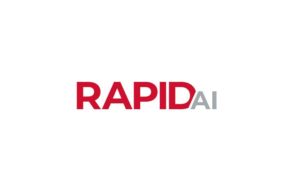 RapidAI announced today that it received FDA clearance for its Rapid Hyperdensity, a new addition to its RapidAI platform.
RapidAI announced today that it received FDA clearance for its Rapid Hyperdensity, a new addition to its RapidAI platform.
San Mateo, California-based RapidAI designed Rapid Hyperdensity to give physicians a tool to quickly assess the severity of injury in patients with acute neuro conditions, such as traumatic brain injury and brain hemorrhages, to allow for better and faster patient care decisions.
The artificial intelligence (AI)-powered Rapid Hyperdensity platform uses non-contrast CT scans to quickly assess the volume of hyperdense tissue in the brain to help physicians identify the extent of an intracerebral hemorrhage.
According to a news release, Rapid Hyperdensity provides additional contextual data to help physicians make more informed triage and transfer decisions to get patients to the right place in a more efficient manner.
“Rapid Hyperdensity helps physicians make the first of many critical decisions involved in head trauma and hemorrhagic stroke protocol. As the only comprehensive neurovascular decision support platform to offer this functionality, RapidAI aims to alleviate the enormous pressure of determining the best next course of action,” RapidAI CEO Karim Karti said in the release. “This FDA clearance is a symbol of RapidAI’s ongoing commitment to push the boundaries of neurovascular care, while designing every product with physicians first in mind.”
Rapid Hyperdensity features the automated detection of intracranial hyperdensities greater than 1mL, the quick identification of hyperdense volumes to improve hemorrhage management and fast results viewable in the Rapid mobile app, PACS/Workstation or email.
“As a neurosurgeon who treats many patients with intracranial hemorrhage (ICH), I am very excited for the recently approved Rapid Hyperdensity product that builds on the well-established RapidAI stroke platform,” said Dr. Alejandro M. Spiotta, director of the Neuroendovascular Surgery Division at the Medical University of South Carolina. “Detection of ICH via AI can save lives by helping to speed up diagnosis and accelerate transfer to the best physician and hospital that can take care of the patient.
“With the addition of automatic hyperdense volume measurement, physicians can more easily track volume over time and help quickly identify which patients may require an intervention. This is an exciting time for those of us treating ICH.”